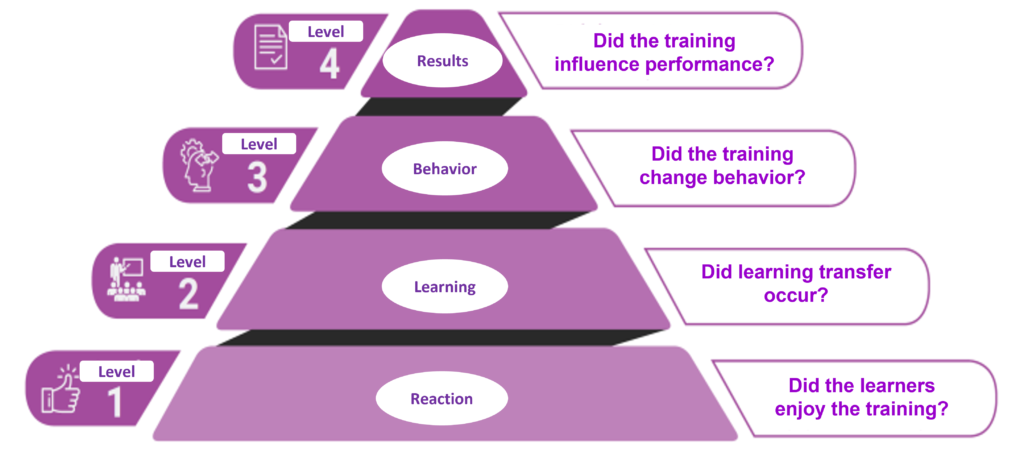
Qualitative and Quantitative Strategies for Measuring Return on Investment (ROI) in Training
Human performance is the driving force of all available resources within an organization. Investing in the human element through training leads to improving the organization’s overall performance and works to qualify it to achieve a sustainable competitive advantage that enables it to achieve pioneering. Thus increasing the organization’s market share and supporting its competitiveness in the local or international markets. Moreover, it isn’t easy to measure and evaluate the human element due to the difference that characterizes this element from one individual to another, from one organization to another, and from time to time. The development of work highlighted the strategic value of (L&D), which led to the importance of measuring ROI in training for organizations. L&D leaders must demonstrate their role in strategic innovation and show how they support business objectives in a competitive marketplace.
Measuring ROI in training calculates any benefit from holding any training program. However, calculating the ROI must express an accurate result representing a realistic and honest value that arises from comparing two specific values according to the following equation: (return to cost ratio = training return – training cost). Measurement and evaluation are necessary for building an organizational culture based on training outcomes. It is noted that organizations cannot determine the actual return on training without using practical evaluation tools and making great efforts in this process.
How to Measure ROI in Training
L&D success is often measured through course completion or learners’ feedback, which is only recorded at face value. However, with the increasingly strategic role of L&D, opportunities for adopting more quantifiable measures of participation exist. Feedback alone is not sufficient to measure ROI in training. Here are some quantitative and qualitative ways to measure ROI in training:
1. Define Training Programs that Support Organizational Goals and Indicators
As the L&D Leader, you will communicate effectively with units and departments to define organizational goals and target KPIs. Then allocating training programs that meet and match these goals and indicators. Noting that setting clear standards and indicators allows for measuring ROI in any training program. It is also possible to measure the growth and development that appears through the performance of employees after training. Thus, defining training programs that support organizational goals and indicators helps prove and measure ROI in training.
2. Link Training to Performance Indicators
To achieve the desired training objectives, it is necessary to explore the gaps in the skills and knowledge of employees to bridge and address them. Knowing that employee KPIs and other performance measures included in employee evaluations are appropriate and essential tools for exploring these gaps. Thus, training programs can be customized by linking them with employee evaluations and performance indicators to meet the needs and address these gaps in the skills and knowledge of the employees. This leads to determining the effectiveness of customized training programs and measuring their ROI.
3. Create Effective Communication Channels to Determine Employee Satisfaction and Retention
One of the main tasks of the L&D department is to identify and measure employee satisfaction, which is a qualitative measure and is as important as measuring ROI in training. Knowing that one of the main objectives of the employees is to identify and seize opportunities for career development, which leads to survival and continuation of work.
In addition, L&D is uniquely positioned to influence employee satisfaction and help organizations retain top talent, which are compelling measures to prove an ROI in training. Thus, as a future and successful manager, you must establish clear and effective communication channels with people managers and familiarize yourself with employee satisfaction surveys and career development resources that are most in demand. Because by enhancing and tailoring training for career development, you will not only retain more employees but attract higher-quality candidates, which is a priority in today’s competitive market.
4. Study Impact to Match Training with Results
An impact study is ideal for matching training to results from the start. A commonly used framework for measuring impact is the Kirkpatrick model, which measures reaction, learning, behavior, and outcomes. However, these categories can be challenging to measure concretely.

5. Take the Initiative and Develop the Return and Cost Equation in Training
Many organizational leaders consider L&D a cost and spending center without return. As a strategic leader, you must work to change this view by demonstrating the benefits and added value that training brings to the organization because there is always value in continuous innovation to reduce costs while maintaining quality. Knowing that in today’s era, the most effective way to reduce learning and development costs is to adopt customized training on demand.
For example, face-to-face training takes up to 85% of the training cost. And increasingly remote and hybrid work environments make the traditional method of face-to-face training nearly impossible. Not to mention the cost of transportation and productivity of the participating employees and their temporary departure from their duties and workplace during the training periods. So rethink your training budget and see where you can cut costs without compromising quality or execution.
Shift Training from the Cost Center to the Revenue Center
As a future manager, you should help the organization recognize its role in reducing costs and generating revenue. Using these five qualitative and quantitative strategies, you can demonstrate the added value of training and develop a comprehensive picture of impact to achieve ROI accurately and effectively.



